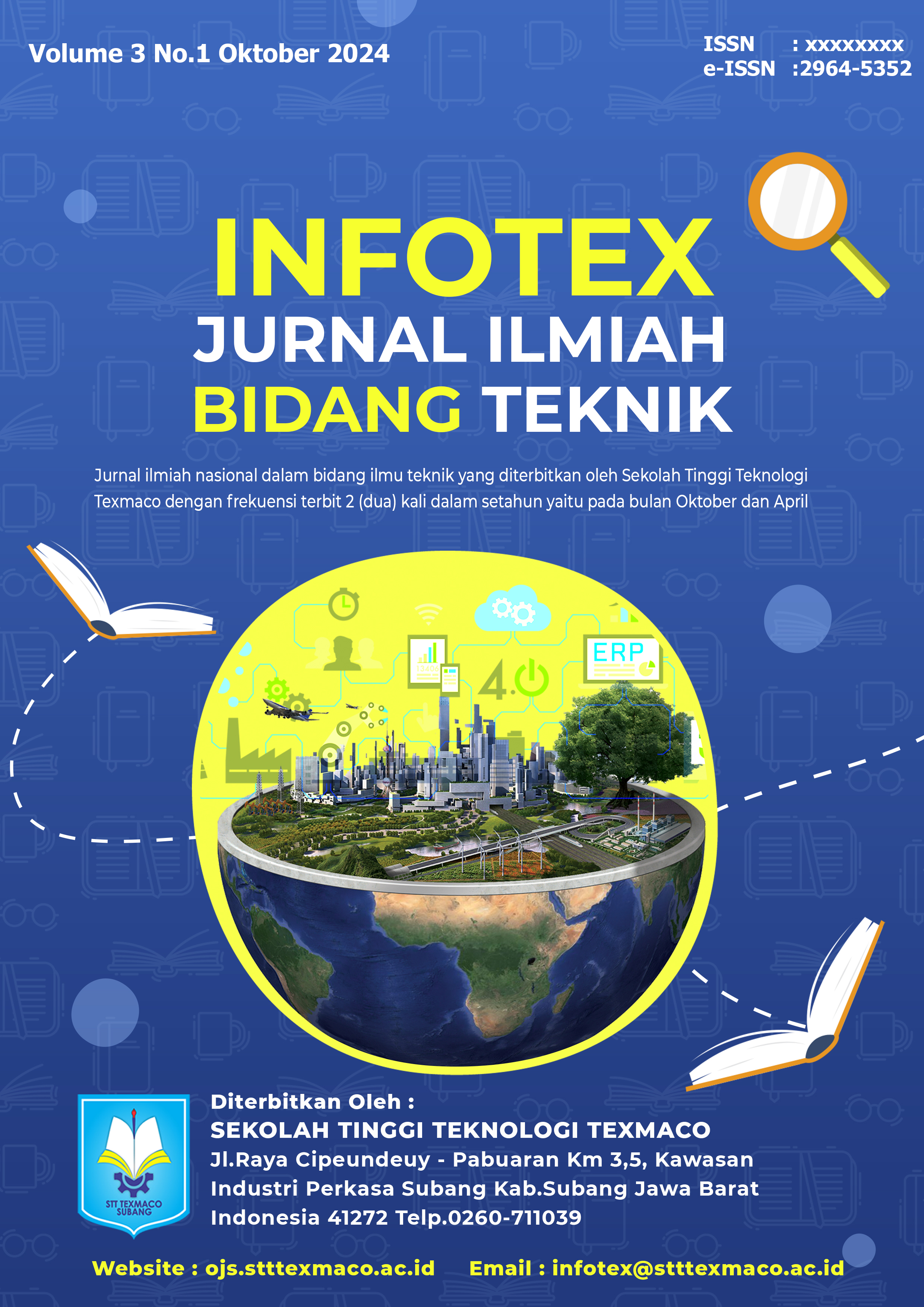Peningkatan Produktivitas Panel Surya Menggunakan Metode Dual Axis Solar Tracker Dan Mikrokontroler
Kata Kunci:
Panel Surya, Dual Axis Solar Tracker, Arduino Uno, Sensor LDR, Motor DC, Energi TerbarukanAbstrak
Penelitian ini bertujuan meningkatkan produktivitas panel surya menggunakan metode Dual Axis Solar Tracker. Sistem ini memanfaatkan Arduino Uno, empat sensor LDR, dan dua motor DC untuk menggerakkan panel surya. Pengujian dilakukan selama tujuh hari dalam berbagai kondisi cuaca, membandingkan kinerja sistem Dual Axis dengan sistem statis. Hasil menunjukkan peningkatan efisiensi rata-rata antara 14,82% hingga 35,3%, dengan mayoritas hasil di kisaran 15-19%. Sistem Dual Axis konsisten mengungguli sistem statis dalam semua kondisi cuaca yang diuji. Analisis data menunjukkan bahwa sistem dual axis mampu mempertahankan kinerja optimal dalam berbagai kondisi atmosfer. Implementasi sistem ini dapat meningkatkan efisiensi pembangkit listrik tenaga surya, terutama di daerah dengan kondisi cuaca bervariasi. Penelitian ini mendemonstrasikan potensi sistem dual axis solar tracker dalam meningkatkan efisiensi panel surya secara substansial.
Referensi
[1] M. Syaiful Alim et al., “INFORMASI ARTIKEL ABSTRAK,” vol. 4, no. 3, pp. 2427–2435, doi: 10.55338/jpkmn.v4i2.1480.
[2] R. Hariyati et al., “Konsep Fotovoltaik Terintegrasi On Grid dengan Gedung STT-PLN,” Jurnal Ilmiah, vol. 11, no. 1, 2019.
[3] G. Rizky Kesatu and W. Priharti, “PENINGKATAN DAYA KELUARAN PANEL SURYA MENGGUNAKAN SISTEM PELACAK SURYA SUMBU GANDA SOLAR PANEL OUTPUT POWER IMPROVEMENT USING DUAL AXIS SOLAR TRACKER SYSTEM.”
[4] S. Yuwono, D. Diharto, and N. W. Pratama, “Manfaat Pengadaan Panel Surya dengan Menggunakan Metode On Grid,” ENERGI & KELISTRIKAN, vol. 13, no. 2, pp. 161–171, Dec. 2021, doi: 10.33322/energi.v13i2.1537.
[5] A. Bintoro, “ANALISA PENGARUH PERUBAHAN SUHU TERHADAP TEGANGAN PANEL SURYA JENIS MONO CHRYSTALLINE KAPASITAS DAYA 50 Wp”.
[6] M. : Peluang, D. Tantangan, P. Tinggi, H. Pranata, A. Soetedjo, and M. I. Ashari, “Seminar Nasional 2022 ITN Malang,” vol. 13, p. 2022.
[7] P. Harahap, N. Evalina, F. Irsan Pasaribu, B. Oktrialdi, and M. Alfansury Siregar, “Implementation of 3000-watt inverter as a source of electrical energy in solar power plants,” Disseminating Information on the Research of Mechanical Engineering-Jurnal Polimesin, vol. 21, no. 4, pp. 2023–2031, 2023, [Online]. Available: http://e-jurnal.pnl.ac.id/polimesin
[8] A. Anwari, L. Harisantoso, and S. S. Hotimah, “Optimalisasi Sistem Pendingin Konvesional Berbasis Mikrokontroler Arduino UNO R3,” 2024.
[9] K. S. Gaeid, M. N. Uddin, M. K. Mohamed, and O. N. Mohmmoud, “Design and Implement of Dual Axis Solar Tracker System Based Arduino,” Tikrit Journal of Engineering Sciences, vol. 27, no. 2, pp. 71–81, May 2020, doi: 10.25130/tjes.27.2.09.
[10] L. H. Santoso, A. Anwari, and R. Nurjanah, “Sistem Pengendalian Tanaman Hidroponik NFT (Nutrient Film Technique) Selada (Lactuca Sativa) Berbasis Iot Dan Pemanfaatan Sumber Energi Surya Sebagai Energi Cadangan (Studi Kasus Proyek P2L Di Desa Cilembu),” 2024.
Unduhan
Diterbitkan
Cara Mengutip
Terbitan
Bagian
Lisensi
Hak Cipta (c) 2024 Lilik Hari Santoso, Budi Sunarto, Desta Galan Maksum

Artikel ini berlisensiCreative Commons Attribution-ShareAlike 4.0 International License.






